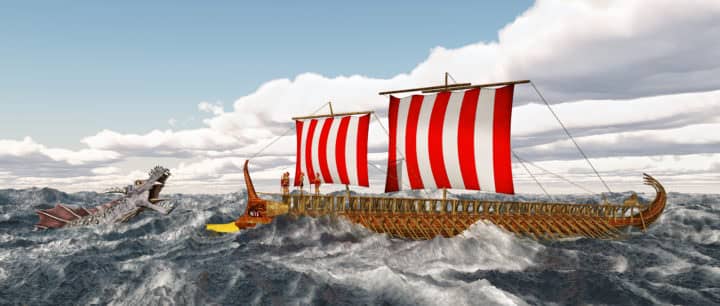 There are plenty of stories in Greek mythology that involve the gods and goddesses, as well as some mortals and heroes. There are also some that involve famous monsters, such as the Minotaur. However, there are many other characters in Greek mythology that maybe aren’t as popular but are just as important. Scylla, a sea monster, is one of these. Here’s more information:
There are plenty of stories in Greek mythology that involve the gods and goddesses, as well as some mortals and heroes. There are also some that involve famous monsters, such as the Minotaur. However, there are many other characters in Greek mythology that maybe aren’t as popular but are just as important. Scylla, a sea monster, is one of these. Here’s more information:
About Scylla in Greek Mythology
Anyone who has ever had to choose between two unfortunate options can understand expressions like “out of the frying pan and into the fire,” or “between a rock and a hard place.” Another saying that has a similar meaning is “between Scylla and Charybdis.” Idiom such as these are derives from Greek mythology and can be traced to Scylla, a many-headed sea monster who was said to live across a narrow strait from a deadly whirlpool called Charybdis.
Both Scylla and the Charybdis had deadly reputations, especially with ships. Because Scylla and Charybdis are so close to one another, any ship that sails between them must choose which danger they would rather face: if they try to avoid Scylla, they will pass dangerously near Charybdis, and vice versa.
References of Scylla in Ancient Greek Literature
Scylla is first mentioned in Homer’s Odyssey. When Odysseus leaves the home of the sorceress Circe, she suggests two alternate routes. The course that Odysseus ultimately chooses leads him to sail through the strait between Scylla and Charybdis. On Circe’s advice, Odysseus chooses to sail more closely to Scylla, reasoning that the monster can only kill a few of his men. The whirlpool Charybdis, on the other hand, could destroy the entire ship, taking the lives of all of the men on board.
Indeed, the choice to sail so closely to Scylla proves fatal for several crew members; she is able to snatch six men from the ship, devouring them alive.
Homer describes Scylla as having twelve feet and six heads, each of which has three rows of deadly teeth. However, later stories tend to depict her with the head and torso of a woman, and several dog-like heads extending from her waist.
There Is Some Mystery Surrounding Scylla
As with her appearance, Scylla’s origins are disputed. At times she is simply described as a monster, presumably born of other monsters. Other sources say that she was originally a beautiful young woman or a naiad who was transformed into a monster as the result of a curse.
This origin story is described in Ovid’s Metamorphoses. In Ovid’s telling, a sea god named Glaucus becomes smitten with the beautiful Scylla, who does not return his affection. The desperate Glaucus turns to Circe for help, asking for a love potion.
This romantic strategy proves to be most unfortunate for Scylla, because Circe falls in love with Glaucus herself. When she is unable to woo Glaucus away from his passion for Scylla, Circe becomes enraged. She poisons Scylla with a magical potion that transforms her into a monster, and Scylla flees to the rocks where she later encounters Odysseus and his crew.
In Greek mythology, Scylla represents one of a choice between two evils. As Circe tells Odysseus, Scylla can’t be killed, so the only defense is to run away as quickly as possible in order to limit the damage she is able to do. As deadly as Scylla is, however, she is still the lesser of the two evils in these tales. She is the danger that must be braved in order to avoid certain destruction by Charybdis.
Source:

